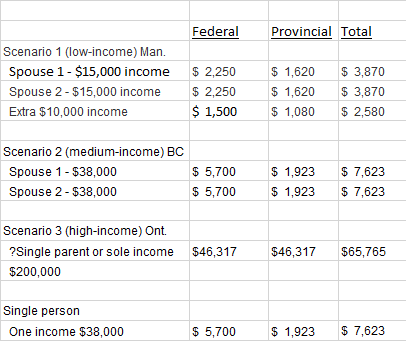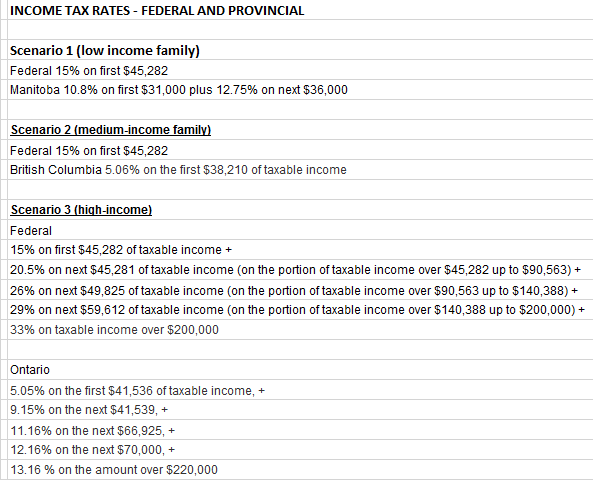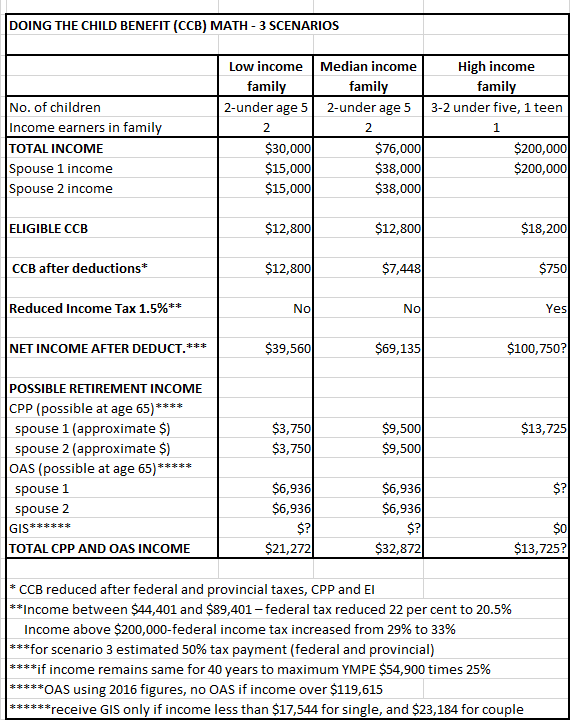DECEASED CANADIAN SINGLE SOLDIERS AND 9/11 VICTIMS FINANCIALLY WORTH LESS THAN DECEASED MARRIED SOLDIERS AND 9/11 VICTIMS
(These thoughts are purely the blunt, no nonsense personal opinions of the author about financial fairness and discrimination and are not intended to provide personal or financial advice.)
(singles-need-to-learn-how-to-articulate-financial-discrimination-of-singles)
This post is about the financial discrimination faced by deceased singles. Two cases outlined include Canadian single soldiers and deceased single 9/11 victims. The sources of news articles on which the deceased Canadian single soldiers information has been based are included at the end of this post.
FINANCIAL DISCRIMINATION OF DECEASED CANADIAN SINGLE SOLDIERS
Several complaints on what was felt to be financial discrimination against deceased Canadian single soldiers were brought before Canadian federal human-right tribunals. It appears that these complaints have resulted in gross human rights violations based on marital status. Some of the names of the deceased involved are Cpl. Matthew Dinning, Pte. Braun Scott Woodfield, Pte. William Cushley, Trooper Jack Bouthillier, Trooper March Diab.
The death benefit in question was the $250,000 lump-sum death benefit to be given only to the families of married or common-law soldiers. Revisions to the Veterans Charter were approved in 2005 so that when a married or common-law Canadian soldier is killed in action, the surviving spouse and children are eligible for a one-time, $250,000 lump-sum to help them with the costs of transitioning to civilian life. The cash is on top of whatever life insurance the deceased has (Supplementary Death Benefit-covers all Canadian Forces members at two years salary which goes to the person whom they designate-and Military Life Insurance which they can purchase through SISIP).
Under the old system, the federal government paid a supplementary death benefit, calculated at two times the member’s annual earnings. The cash went to the spouse, or another designated beneficiary of the soldier. If there was no beneficiary, the money would go into the estate.
As of 2011 less than about half of the deceased soldiers in Afghanistan have been single.
The issues behind the complaints are outlined here.
- VIOLATION OF CANADIAN LAW AND CANADIAN REVENUE AGENCY (CRA) BY CHANGING MARITAL STATUS
The parents of Pte. William Cushley issued a complaint on why they did not receive same compensation as married or common-law deceased soldiers. The final result of a federal human-rights tribunal rejected the complaint of Lincoln and Laurie Dinning for Cpl. Matthew Dinning because Veterans Affairs abruptly decided to recognize their son’s girlfriend of a couple of months as his common-law spouse, technically making him no longer single even though she had not lived with him for a year (marital-status). “An eleventh hour offer by the Department to recognize Dinning’s girlfriend as a common-law spouse was no doubt done to try to quash the hopes of other families challenging the government on the discrimination related to this death benefit.” Definitions clearly state couples have to co-habitat for a year before declaring common-law status.
Veterans Affairs clearly violated the law by changing the marital status of the deceased single soldier from single to common-law spouse.
2. DECEASED MARRIED SOLDIERS RECEIVE $250,000 DEATH PAYOUTS, BUT DECEASED SINGLE SOLDIERS DO NOT
As stated by one of the parents: “You have four men killed in the same battle, three of them are paid $250,000, (but) William does not qualify because he is single. It doesn’t make any sense to me.”
3. DATE OF DEATH FELL OUTSIDE DATE OF APPROVAL
Relatives of Pte. Braun Scott Woodfield, who died in a military vehicle accident in November, would be sharing a $250,000 tax-free payment specially authorized by cabinet to compensate for his death while on duty…..But records released under the Access to Information Act indicate Woodfield’s family was excluded from the cabinet order, which gave a total of $1 million to four other families grieving over military deaths. That’s because Canada’s new Veterans Charter, which for the first time provides a non-taxable $250,000 death benefit, was passed by Parliament on May 13, (2005) last year but didn’t come into effect until April 1 (2006) this year. Deaths that occurred in the interim were not covered by the charter…. His death benefits were then denied because he was single.
4. DECEASED SINGLE SOLDIERS DO NOT QUALIFY IF THEY DID NOT MEET DEFINITION OF ‘SURVIVOR’
“But Woodfield’s family will not get a red cent because under the Veterans Charter, only “survivors” can receive the $250,000 death benefit. And because survivors are defined only as dependent children, spouses or common-law partners, Woodfield – as a single man with no children – had no “survivors” to receive any cash.
Instead, the cabinet order provided the money to the surviving spouses, common-law partners and children of three men killed in Afghanistan, as well as to the two daughters of Warrant Officer Charles Sheppard, who died in a parachuting accident at Trenton, Ont., on Oct. 3, 2005.”
“Pte. Woodfield is not eligible because he does not have a survivor or any dependent children,” Veterans Affairs spokeswoman Pamela Price confirmed in an interview. Woodfield’s mother said the Veterans Charter policy should be changed to help the next-of-kin of unattached soldIers.
“In a sense, you felt that my son was less of a person, as a single person,”…..
The death benefit under the Veterans Charter is unusual because of its restriction to so-called “survivors,” since single soldiers with no children have long been unconditionally eligible for almost all other death benefits provided by the military.
For example, the Canadian Forces pays for the funerals and burials of all serving members killed on duty, as it did for Woodfield.
National Defence spokesman John Knoll said the Forces also pay supplementary death benefits – two years of salary, tax-free – to the estate of the member or to his or her designated beneficiary. The military will also provide severance pay to the estate or designated beneficiary, seven days’ pay for each year of service.
And any pension entitlements that had been accrued by deceased members go to a designated beneficiary or the estate if there is no spouse, common-law partner or children, he said.”
5. VETERAN AFFAIRS ARGUES THAT THIS DEATH BENEFIT IS NOT LIFE INSURANCE AND IS SPECIFICALLY TARGETED TO HELP FAMILIES AFTER SOLDIER’S DEATH AS SPOUSE OR PARENT
Veterans Affairs has argued that the death benefit is not life insurance and the payout is specifically targeted at families to help them transition to civilian life. Lawyers for the department, in written submissions, have said the federal government isn’t obliged to pay compensation in every circumstance.
Other comments from news articles: “Lincoln Dinning, Matthew’s father, said he would never have filed the human rights complaint, which alleged the government discriminated against single soldiers, had there been a spouse in the picture at the outset”.
“Single soldiers can choose to take out life insurance and make payable, for example, to his or her parents or estate. That kind of insurance can only be obtained through the Service Income Security Insurance Plan (SISIP) Long Term Disability, a government-directed insurance program for the Canadian Forces. But the Royal Canadian Legion, representing 340,000 members across the country, said the one-time death benefit is clearly meant to cover pain and suffering, not economic loss, which is covered other benefit packages”.
“Errol Mendes of the University of Ottawa says it’s clearly established in law that discrimination based on marital status violates the Charter of Rights and Freedoms and he wonders why Veterans Affairs still supports the practice. “There is a compelling case on the part of single soldiers,” Prof. Mendes said yesterday. “Whether or not there is a legal case, there is a huge moral, social, ethical and political reason why the government should be covering this.”
Reader comment-”The stated purpose is to help transition the soldier’s immediate family from a military life to a civilian life, due to the loss of income, housing, support network etc. It is not meant to recognize their sacrifice through a financial payout. That being said, if a single soldier has elderly/infirm parents or siblings that he/she is legally responsible for, the money should be paid out in those instances. And hopefully the member made arrangements beforehand in case this happens (setting up trusts etc.).”
Reader comment-Another aspect that cannot be ignored are these scenarios: “If a single soldier is gravely injured, and an application is subsequently made on their behalf for the Disability Benefit, and they then die more than 30 days later, then the Disability Benefit would be issued to the estate at a rate of 100% disability. If a single soldier is killed instantly, then no Death Benefit is issued, period. A 100% Disability Benefit is exactly the same amount as the Death Benefit, but only one of these scenarios generates a benefit – dependent upon when the veteran dies. Doesn’t sound quite so equal. I can see why there are arguments that the Death Benefit should be paid to the Estate, not to the survivor.”
Other documents dated after the charter’s implementation, showed veterans groups were concerned about the exclusion of single soldiers from the payment, but Veterans Affairs placated them by saying it was prepared to “explore any gaps or omissions” and to “make changes to the (New Veterans Charter) to the extent possible.”
Comments from Veteran Affairs Canada -“Although other family members, such as parents, also suffer from the loss due to the sudden death of the Canadian Forces member, they do not face the same financial impacts as the spouse/common-law partner and/or dependent children of the Canadian Forces member,” Janice Summerby, a spokeswoman for Veterans Affairs Canada, said in an email statement to the Star.
Summerby added that single soldiers can choose to take out life insurance and make payable, for example, to his or her parents or estate. That kind of insurance can only be obtained through the Service Income Security Insurance Plan (SISIP) Long Term Disability, a government-directed insurance program for the Canadian Forces. But the Royal Canadian Legion, representing 340,000 members across the country, said the one-time death benefit is clearly meant to cover pain and suffering, not economic loss, which is covered other benefit packages.
“It is one of the deficiencies that we identified in the new Veterans’ Charter . . . that it is a discriminatory practice that married members receive a death benefit but single members don’t receive a death benefit. The Legion believes that all Canadian forces members killed (in the line of duty) … be granted a death benefit,” Andrea Siew, of the Royal Canadian Legion in Ottawa, told the Star.
Siew said the death benefit is not about financial compensation for the loss of income, “it is an award payment for the non-economic loss associated with pain and suffering. It is very clear in the legislation it’s about that.”
FINANCIAL DISCRIMINATION OF 9/11 SINGLE VICTIMS
“What Is the Life of a Single Person Worth?” from ‘Singled Out, How Singles Are Stereotyped, Stigmatized and Ignored, and Still Live Happily Ever After’ by Bella DePaulo, Ph.D., St. Martin’s Griffin, New York, 2006, page 228 (singlism).
“After the terrorist attacks of September 11, 2001, the U.S. government created a fund to compensate the families of the victims. Compensation was calculated separately for each victim, based in part on projected lifetime earnings and other sources of money. In addition, each family was paid a standard $250,000 for pain and suffering. The final component was an extra $50,000 for spouses and for each child. According to these calculations, the lives of single victims are automatically worth less than those of married victims. The $50,000 that would go to a married victim’s spouse would not go to any living person who cared about the victim who was single.
The Victim Compensation Fund declared in cold, hard numbers that in contemporary American society, the life of a single person is worth less than the life of someone who is married. That’s only one of the reasons I find it interesting. The fund also makes another set of values unusually clear. A relationship with a spouse is considered worthier than any other adult relationship, including even ties to parents or siblings. Said the mother of one of the 9/11 victims, “When they did this formula, why didn’t they consider the parents? My daughter-in-law was married for five years. We had Jonathan for 35 years”
The person in charge of the excruciating task of assigning a dollar value to victims’ lives, attorney Kenneth Feinberg, had second thoughts about the matter after the job was completed. In the book he wrote about his experiences, he concludes that if Congress ever decides to create such a fund again, all victims should be valued equally”.
CONCLUSION:
From examination of these two cases, it is apparent that even in this era of enlightenment where discrimination is supposed to be recognized and eliminated, financial discrimination of singles is as rampant as it ever was decades ago.
Observations include the following:
- Financial discrimination of singles continues even when they are deceased. The financial lives of deceased singles are viewed to be worth less than married or common-law deceased persons.
- Blatant manipulation of marital status done by Veteran Affairs just to avoid legal ramifications is a violation of the law and human rights of singles.
- There is a clear legal process to follow in the distribution of financial assets of singles and married or common-law families. For singles, distribution is determined by wills and estates; for married or common-law families, distribution is determined by spousal and child dependents first, then parents and siblings in accordance with wills, estate and pre-nuptial agreements, so why would Veterans Affairs try to usurp this legal process?
- In the 9/11 victims article, the following statement is in the eye of the beholder and can be viewed from different angles: Said the mother of one of the 9/11 victims, “When they did this formula, why didn’t they consider the parents? My daughter-in-law was married for five years. We had Jonathan for 35 years.” First, when children marry, the proper thing for parents to do is to give up their parental rights and allow their children to become their own family units with their own rights, so why should parents feel they are entitled to victim’s benefits over the spouse and children dependents of the victim? Second, as stated above there is a clear legal process for determining who will receive benefits. Spouses and children take first priority followed by parents and siblings further down if spouse and children are all deceased as determined by law.
- Kenneth Feinberg, had second thoughts about the matter after the 9/11 job was completed and concluded that if Congress ever decides to create such a fund again, all victims should be valued equally. (Just a little too late, don’t you think)!
- It should be very clear how important wills are to prevent possible infighting that can occur over death benefits.
- All deceased persons deserve the same death benefits regardless of marital status.
MEDIA ARTICLES
Denying death payment to single soldiers’ families discriminatory, family claims from The Canadian Press-The News June 6, 2010 (Denying-death-payment-to-single-soldiers)
‘Family of Canadian Soldier in Afghanistan not getting death benefit after all’ From Canadian Content at 15:26 on June 18, 2006, EST. By DEAN BEEBY (soldier-family)
Single soldier’s parents denied compensation for his death, The globe and mail, by Dean Beeby, June 19, 2006 (single-soldiers-parents-denied-compensation-for-his-death)
Extending benefits to families of single soldiers would cost $3M, the Canadian Press, March 20, 2011(extending-benefits-to-families-of-single-soldiers-would-cost-3m)
‘Families of single soldiers say death benefit unfair’, CBC News, The Canadian Press, Dec. 1, 2011 (cbc.ca/news)
Parents of fallen soldiers fight for benefits by Kris Sims, Atlantic Bureau, December 1, 2011 (parents-of-fallen-soldiers-fight-for-benefits)
‘Investigation needed into government treatment of veteran’s families fighting for death benefit’ , NDP website, December 1, 2011 (ndp.ca/news)
‘Family fights for soldier’s death benefit’ by Cathy Dobson, Sarnia Observer, December 3, 2011 (family-fights-for-soldiers-death-benefit)
‘No equality’ in not paying death benefit to single soldiers, says father’ by Richard J. Brennan, National Affairs Writer, Dec. 19, 2011 (thestar)
The Death Benefit for Single Members Merged Thread (p. 33 and 44 of 47) Pages: << < (33/47) > >>
(This blog is of a general nature about financial discrimination of individuals/singles. It is not intended to provide personal or financial advice.)



